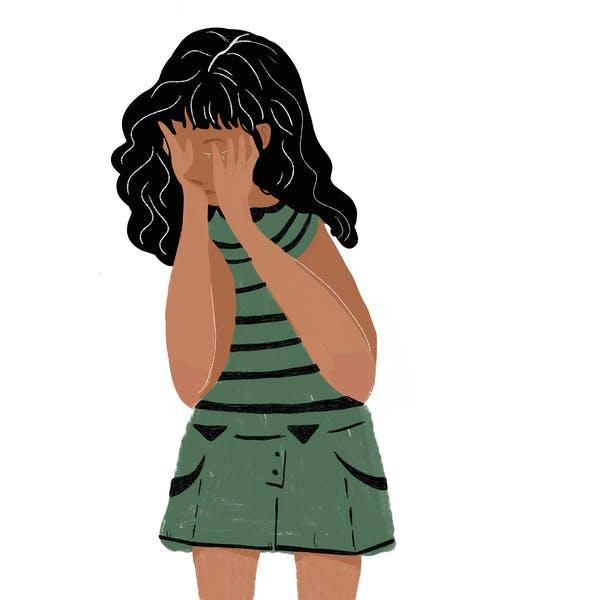
Oct. 20, 2021
Not as good as we want, not as bad as we’ve heard: Teen mental health during the COVID-19 pandemic
Let’s start with the obvious. Canada’s youth are experiencing disruptions to their lives like few others in recent history. And the present school year has not started off in the direction we had hoped, with unstable COVID-19 numbers, the uncertainty of school safety and the Delta variant.
Headlines declare that isolation has caused youth mental health issues and that children’s mental health is being badly harmed by the pandemic. But are youth being impacted as negatively as the headlines would have us believe? Do we really have the data — past or present — to be making such declarations? What do we know about Canadian youth and their functioning during a global pandemic?
Data past and present
Finding reliable pre-pandemic data on Canadian youth mental health is harder than you think. For decades, we relied on studies like the 1987 Ontario Child Health Study and its finding that one in five youth had psychiatric disorders — a broad statistic still widely touted today. At that time, 18.1 per cent of children ages four to 16 were experiencing one or more disorders.
Jump ahead almost 30 years to the 2014 Ontario Child Health Study and the prevalence numbers for emotional and behavioural disorders are eerily similar. Based on parent reports and self-reports, the prevalence for “any disorder” for youth ages 12-17 is 18.2 per cent and 21.8 per cent, respectively. Though limited to a single province, and while not dismissing the experience of those children with clinical mental disorders (as described in the DSM-V), the available peer-reviewed pre-pandemic data hardly suggest that there has been a dramatic increase in mental disorders for Canadian youth.

Canada’s youth are experiencing life disruptions like few others in recent history.
Pixabay
Now, don’t get me wrong; I share in the discontent with the number of Canadian youth experiencing mental disorders and their lack of access to services. But as a registered psychologist and researcher for over 25 years, I’ve always thought that the one-in-five statistic fails to capture the considerable inequalities inherent in the prevalence rates of youth with mental disorders. For example, a mild specific learning disorder and childhood-onset schizophrenia are not comparable diagnostically, by way of functional impairment or in the intensity of intervention required.
Contributing to the confusion about prevalence, parent or self-report scales often used in survey research reduce complex mental disorders to nonspecific, global ratings or a screening checklist of symptoms that are mistaken for being diagnostic. Summary reports may cite results of broad ratings of youth mental health, and even some peer-reviewed publications equate single-item queries such as “How is your child’s overall mood?” with diagnoses like depression and anxiety. Such studies contribute to the inflammatory rhetoric pervasive in press reports of youth mental health.
Measuring COVID-19’s impact
With this brief historical context in mind, estimating the measured impact of the COVID-19 pandemic on youth mental health becomes even more difficult. Individual and meta-analysis studies are starting to appear in droves, and though helpful and informative, many are pre-prints (not peer-reviewed), very few use Canadian samples and many do not use longitudinal comparison samples before and during COVID-19.

More young people reported stress, worry and sadness during the pandemic.
Pixabay
Almost nonexistent are peer-reviewed studies that published reliable estimates of pre-COVID-19 youth mental health and used clinically valid measures to do so. However, some notable exceptions include a study with Québec and Ontario adolescents and another with young adults in Québec, both of which found only modest increases in mental disorders like anxiety and depression during COVID-19 compared to pre-COVID estimates.
Our COVID-19 Student Well-being and Resiliency Study of over 1,500 Alberta students ages 12-18 during the last school year confirms and adds to these recent Canadian studies. Students from multiple school divisions completed an online survey at separate times (September and December 2020, March and June 2021) about COVID-19 concerns, their levels of stress, behavioural and adaptive functioning and resiliency.
When schools reopened in September 2020, student functioning in these areas was generally found to be below the threshold of any clinical concern or risk. In short, youth were doing OK, but we wondered how this might change over the school year.
Comparing early to late school year, our Wave 4 data (June 2021) indicate the percentage of students who self-reported their COVID-19 stress reactions in the “above clinical cut-off” range rose to 29.9 per cent from 23.5. Percentage of students’ who self-reported negative affect (feelings like worry and sadness) in the “high risk” range increased to 25.2 per cent from 17.3 per cent. Interestingly, students who were “very” or “extremely” concerned about catching COVID-19 decreased slightly from 38.2 per cent to 34.8 per cent, suggesting the pandemic’s social disruptions were more powerful than the health threat itself.

Young people’s resilience support from parents, personal resources and communities remained stable during the pandemic.
Canva
Important developmental and contextual factors are also often ignored when reporting the overall presentation of youth mental health. In our study, the 15-18 age group reported more stress than the 12-14 age group, females reported higher negative affect than males, and those whose families had experienced income loss and those with previous psychological diagnoses had unique stress and mental health profiles.
However, for all youth in our study — whether in the risk ranges or in the typical ranges of functioning — self-reported resilience support from parents, personal resources and communities remained high and stable.
Normal response vs. mental health crisis
What does this all mean? Although some youth are clearly reporting heightened negative effects of the pandemic on their social, personal and educational lives, in all areas we measured, over seven in 10 youth in our sample are responding to COVID-19 in ways that are developmentally and psychologically normal. This aligns with the Canadian pre-COVID longitudinal studies above. In other words, contrary to the alarming headlines, the majority of youth are doing as well as they can!

Most young people are responding to the pandemic in ways that are psychologically and developmentally normal.
Pixabay
But what about the other 30 per cent? Do their self-reported symptoms mean we have a shadow pandemic of youth mental health? Part of the answer might come in the language we use to understand mental disorders (part of mental health literacy). Put directly, feeling sad or lonely is not depression; worry or nervous feelings is not anxiety. Literature that leads us to believe otherwise is unethical at best and clinically damaging at worst.
Pathologizing normal, healthy responses to adverse experiences promotes misunderstanding about mental illness, and communicating to children that their COVID-19-related thoughts and feelings are akin to mental disorders might reignite a stigma that we have worked so hard to dismantle. Many factors have to be ruled out before we can reliably diagnose a mental disorder. And although a pandemic might certainly exacerbate symptoms consistent with or contributing to a mental disorder, it is not a direct, causal line.
Resiliency happens when children experience adversity in the context of available and accessible personal and social resources. When youth hear constant messages that their sadness, frustration or worry are being interpreted as a mental disorder, this compromises the unique opportunity for youth to learn how to adapt and even thrive in the middle of a pandemic.
For those youth who need it, let’s get evidence-based help to them as quickly as we can and as close to their communities as possible, such as school-based services. But for the majority of youth, qualifying their lived experiences as clinically disordered only adds to their already heavy load of coping with COVID-19.
Our challenge moving forward will be to accept the honesty of their sadness and worry and to nurture their strengths of perseverance and resolve. In doing so, we can start to envision and build the changes in youth mental health promotion, prevention and intervention that are so desperately needed. And that is a headline we all can agree on.
Kelly Dean Schwartz is associate professor, School and Applied Child Psychology, University of Calgary.






